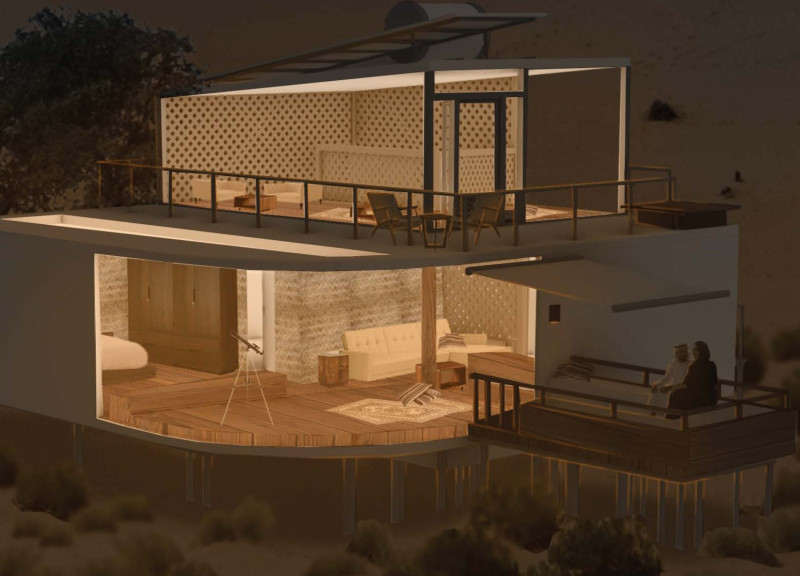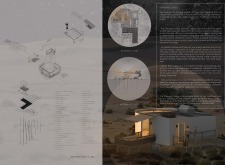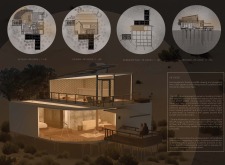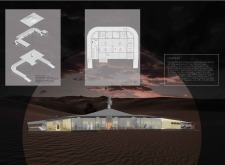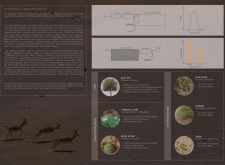5 key facts about this project
The architectural design features the Standard Lodge, VIP Lodge, and Common Hub, located in a desert area designed to enhance experiences such as wildlife viewing and stargazing. The overall concept focuses on integrating built spaces with the natural environment while drawing from traditional architectural styles to meet contemporary needs.
Design of the Standard Lodge
The Standard Lodge offers guests opportunities for evening wildlife viewing and stargazing. The structure has a curved facade that creates expansive views of the desert landscape. A significant skylight allows for passive ventilation and facilitates star observation, contributing to a unique experience for visitors.
Technological Features
Low-energy electrochromic tinting technology is used on the lodge's glazed surfaces, responding to changing light conditions. This system reduces solar exposure during the day and clears at night, optimizing views for observing wildlife. Additionally, anti-glare film improves visibility, while interior curtains and external shutters provide privacy and control light levels for guests.
VIP Lodge Enhancements
The VIP Lodge builds on the design principles of the Standard Lodge, offering more space and luxury features. It includes a larger washroom with screened windows, along with an expansive indoor viewing platform. The second-floor lounge and outdoor patio provide a direct connection to the desert environment, enhancing comfort and privacy for guests.
Common Hub and Landscape Integration
The Common Hub acts as a gathering space, inspired by traditional Bedouin tents. Designed for communal activities, it facilitates interaction among guests while employing features that respond to the desert climate. The landscaping incorporates native plants that attract local wildlife and support ecological balance. Treated greywater is used for irrigation, helping maintain vegetation that provides hydration and habitat for animals.
The design also includes a glazed floor panel at the entrance, revealing small desert animals seeking shelter, further connecting guests to the local ecosystem.


